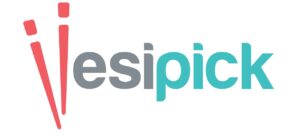Project scope defines the boundaries of a software development project. It outlines what will be delivered, the work involved, and the resources required to complete the project successfully. A well-defined scope is crucial for several reasons:
Improved Team Alignment:
Everyone involved in the project understands the goals, deliverables, and limitations, leading to a more cohesive team effort.
Reduced Risk:
A clear scope helps identify potential risks early on and develop mitigation strategies, minimizing surprises and delays during development.
Enhanced Project Management:
Defined deliverables and timelines facilitate effective project planning, resource allocation, and progress tracking.
Increased Stakeholder Satisfaction:
Stakeholders (clients, investors) are kept informed of project boundaries and can make informed decisions based on realistic expectations.
The best strategies to define project scope for a medium-sized remote software development team
- Collaborative Planning:
Kick-off meeting:
Organize a virtual kick-off meeting with key stakeholders (client, product manager, developers, testers) to discuss project goals, user needs, and functionalities.
Brainstorming and Prioritization:
Facilitate a brainstorming session to identify all potential features and functionalities. Then, collaboratively prioritize them based on importance, impact, and feasibility. Utilize tools like whiteboards or online collaborative platforms (Miro, Mural) to capture ideas visually.
- User-Centric Approach:
User Research:
Incorporate user research findings (e.g., surveys, interviews) into the scope definition. Understand user needs, pain points, and desired experiences to ensure the project delivers value.
User Stories:
Develop user stories that outline functionalities from the user’s perspective. User stories should answer “Who,” “What,” and “Why” for each feature.
- Defining Deliverables and Acceptance Criteria:
Clearly Defined Deliverables:
Outline all deliverables for the project, including features, functionalities, user documentation, and testing reports.
Measurable Acceptance Criteria:
Establish clear and measurable acceptance criteria for each deliverable. These criteria define when a feature is considered complete and functions as intended.
- Agile Methodology for Scope Management:
Phased Approach:
Break down the project into smaller, manageable phases with well-defined deliverables. This allows for iterative development and easier adaptation to changing priorities.
User Acceptance Testing (UAT):
Involve end-users in User Acceptance Testing (UAT) to ensure the developed features meet their needs and expectations. Feedback from UAT can inform adjustments to the scope if necessary.
- Communication and Documentation:
Transparent Communication:
Maintain clear and transparent communication with all stakeholders throughout the scope definition process.
Scope Documentation:
Document the project scope in a central location (e.g., project management tool, shared document) accessible to all team members. This document should include project goals, deliverables, acceptance criteria, and the finalized feature list.
Additional Considerations for Remote Teams:
Asynchronous Collaboration:
Utilize asynchronous collaboration tools like project management platforms, document-sharing platforms, and communication channels (Slack) to facilitate efficient collaboration despite time zone differences.
Regular Status Updates:
Schedule regular virtual meetings to discuss progress, address any roadblocks related to scope, and ensure everyone is on the same page.
Benefits of this Approach:
Improved Team Alignment:
Collaborative planning fosters a shared understanding of project goals and expectations.
Reduced Risk of Scope Creep:
User-centric approach and clear acceptance criteria minimize the risk of scope creep, where additional features are added outside the initial plan.
Increased Stakeholder Satisfaction:
Regular communication and transparent documentation keep stakeholders informed and involved throughout the process.
Enhanced Agility in Remote Setting:
Phased development and user feedback loops within an Agile framework allow for adaptation and course correction in a remote environment.
Other Technical and Management Areas
Project Management Tools:
Utilize project management tools to define, track, and communicate the project scope visually with features like task lists, timelines, and Kanban boards.
Change Management Process:
Establish a clear process for handling changes to the project scope. This ensures that modifications are documented, evaluated for impact, and approved by relevant stakeholders.
By following these strategies, you can define a clear and manageable project scope for your medium-sized remote software development team, setting the stage for a successful and predictable project lifecycle. Remember, effective scope definition is an ongoing process, requiring flexibility and adaptation as the project progresses.



